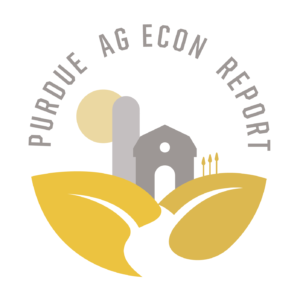Beef Cattle Numbers Keep Dropping
October 23, 2011
PAER-2011-13
Chris Hurt
The beef cow herd continues to drop as producers have been discouraged by high priced feed over the past several years and the drought in the Southern Plains keeps cows moving to market. Beef cow numbers have dropped by 12% since 2007. The number of heifers being retained for replacements is down 5%, and cow slaughter has remained high this summer. These are all indications that the cow herd is continuing to decrease.
While less beef is being produced in the U.S., more of it is being exported. Beef exports will be up about 14% in 2011. A weak dollar and strong economic growth in developing countries stimulates demand. Beef exports are expected to be 10% of total U.S. production this year, exceeding the previous record in 2003 prior to the BSE event. Beef imports are also down this year by 5%. This combination of much stronger exports and lower imports means that the U.S. will be a net exporter of beef, an unusual situation.
With production off and trade up per capita, supplies in the U.S. are expected to be down 4% in 2012. Since feed prices began to escalate in 2007, the per capita supply of beef available to Americans is down 15%. This means in 2012 there will only be 55.6 pounds of beef available per person, compared with 65.2 pounds in 2007.
Less beef means much higher prices. Finished steer prices in 2007, before the surging feed prices, averaged $92 per hundredweight. In 2011 they will average about $113 before moving on to around an expected average of $116 for 2012.
Oklahoma City steer calves averaged $125 per hundredweight in the fall of 2010. Those prices are expected to be $5 to $15 higher this fall. Feeder steers at the same location were $111 in the fall of 2010 and are expected to be in the $125 to $135 range this fall. Calf and feeder cattle prices will be sensitive to feed prices. Higher feed costs will quickly lower calf prices.
Prospects for cow-calf operators appear to be positive over the next several years. The breeding herd is not likely to begin expansion until the drought in the Southern Plains fades. If crop yields return to normal in 2012, prices for major feedstuffs and forages will be lower, and finished cattle prices will be very high. This is a combination that can add quickly to calf prices by the fall of 2012. Low beef production is likely to keep calf prices high through at least 2015 and probably beyond.
All this favors Midwestern cow-calf operations that have reasonable forage supplies this year and can hold cows for the longer run opportunities.

